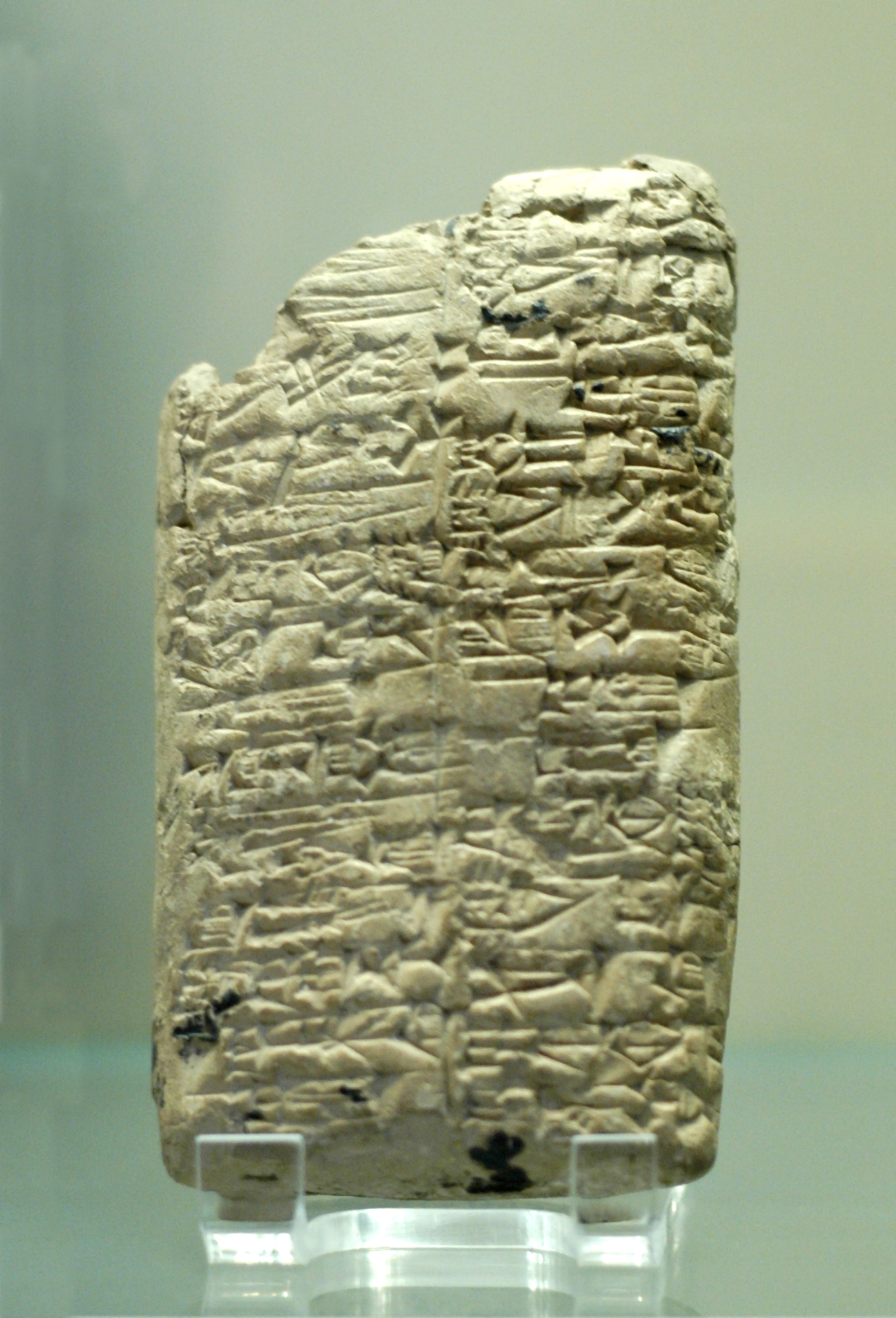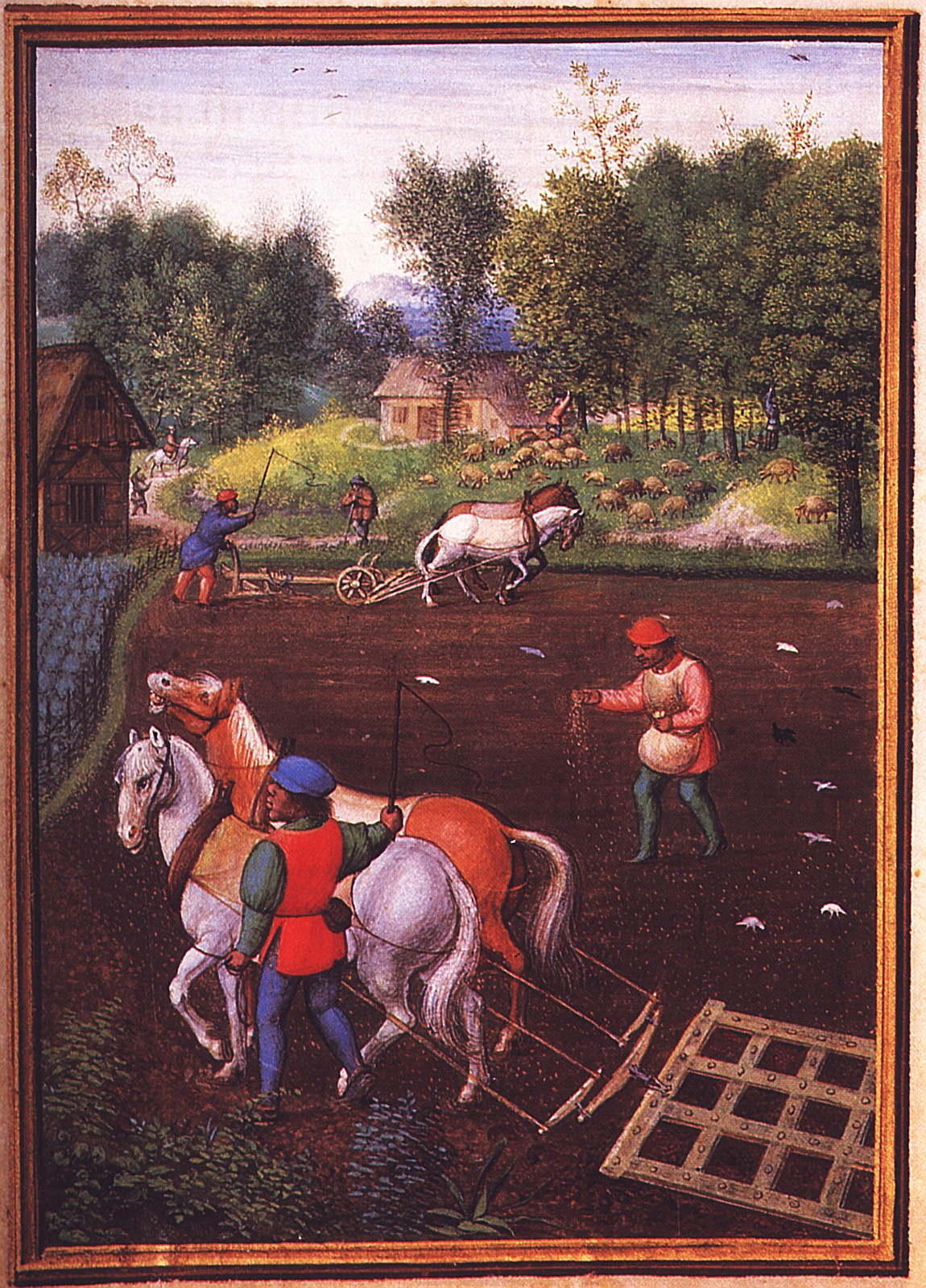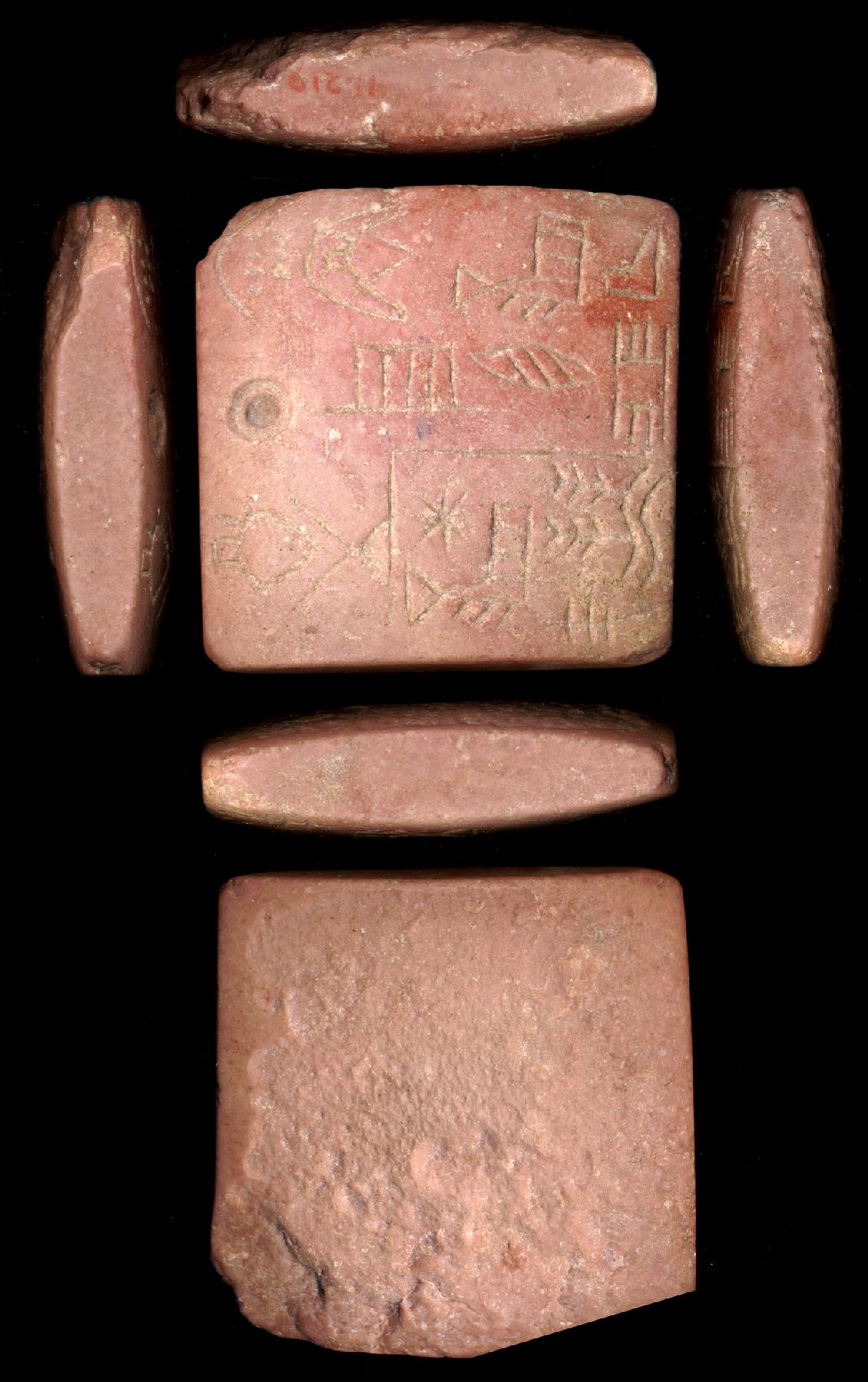|
Debate Between The Hoe And The Plough
The Debate between the hoe and the plough (Electronic Text Corpus of Sumerian Literature, CSL 5.3.1) is a work of Sumerian language, Sumerian literature and one of the six extant works belonging to this literature's genre of Sumerian disputations, disputations poem. It was written on Clay tablet, clay tablets and dates to the Third Dynasty of Ur (ca. mid-3rd millennium BC) and runs 196 lines in length. The text was reconstructed by M. Civil in the 1960s. The two protagonists, as in other disputation poems, are two inarticulate things: in this case, two pieces of agricultural equipment, the Hoe (tool), hoe and the plough. The debate is about which is the better tool. The ''Hoe and Plough'' is (along with ''Debate between sheep and grain, Sheep and Grain)'' the best attested of the disputation poems given its attestation from ~60 manuscripts, likely due to its integral place as part of the ancient Sumerian scribal curriculum especially at the city of Nippur where the overwhelming majo ... [...More Info...] [...Related Items...] OR: [Wikipedia] [Google] [Baidu] |
Electronic Text Corpus Of Sumerian Literature
The Electronic Text Corpus of Sumerian Literature (ETCSL) is an online digital library of texts and translations of Sumerian language, Sumerian literature that was created by a now-completed project based at the Oriental Institute, Oxford, Oriental Institute of the University of Oxford. This project's website contains "Sumerian text, English prose translation and bibliographical information" for "over 400 literary works composed in the Sumerian language in ancient Mesopotamia (modern Iraq) during the late third and early second millennia BCE." It is both browsable and searchable and includes transliterations, composite texts, a bibliography of Sumerian literature and a guide to spelling conventions for proper nouns and literary forms. The purpose of the project was to make Sumerian literature accessible to those wishing to read or study it, and make it known to a wider public. The project was founded by Jeremy Black (assyriologist), Jeremy Black in 1997 and is based at the Orient ... [...More Info...] [...Related Items...] OR: [Wikipedia] [Google] [Baidu] |
Enlil
Enlil, later known as Elil and Ellil, is an List of Mesopotamian deities, ancient Mesopotamian god associated with wind, air, earth, and storms. He is first attested as the chief deity of the Sumerian pantheon, but he was later worshipped by the Akkadian Empire, Akkadians, Babylonian Empire, Babylonians, Assyrian Empire, Assyrians, and Hurrians. Enlil's primary center of worship was the Ekur temple in the city of Nippur, which was believed to have been built by Enlil himself and was regarded as the "mooring-rope" of heaven and earth. He is also sometimes referred to in Sumerian texts as Nunamnir. According to one Sumerian hymn, Enlil himself was so holy that not even the other gods could look upon him. Enlil rose to prominence during the twenty-fourth century BC with the rise of Nippur. His Cult (religious practice), cult fell into decline after Nippur was sacked by the Elamites in 1230 BC and he was eventually supplanted as the chief god of the Mesopotamian pantheon by the Baby ... [...More Info...] [...Related Items...] OR: [Wikipedia] [Google] [Baidu] |
Mesopotamian Myths
Mesopotamian mythology refers to the myths, religious texts, and other literature that comes from the region of ancient Mesopotamia which is a historical region of Western Asia, situated within the Tigris–Euphrates river system that occupies the area of present-day Iraq. In particular the societies of Sumer, Akkadian Empire, Akkad, and Assyria, all of which existed shortly after 3000 BCE and were mostly gone by 400 CE. These works were primarily preserved on stone or clay tablets and were written in Cuneiform script, cuneiform by scribes. Several lengthy pieces have survived erosion and time, some of which are considered the oldest stories in the world, and have given historians insight into Ancient Mesopotamian religion, Mesopotamian ideology and cosmology. Creation myths There are many different accounts of the creation of the earth from the Mesopotamian region. This is because of the many different cultures in the area and the shifts in narratives that are common in an ... [...More Info...] [...Related Items...] OR: [Wikipedia] [Google] [Baidu] |
Creation Myths
A creation myth or cosmogonic myth is a type of cosmogony, a symbolic narrative of how the world began and how people first came to inhabit it., "Creation myths are symbolic stories describing how the universe and its inhabitants came to be. Creation myths develop through oral traditions and therefore typically have multiple versions." While in popular usage the term ''myth'' often refers to false or fanciful stories, members of cultures often ascribe varying degrees of truth to their creation myths. In the society in which it is told, a creation myth is usually regarded as conveying profound truthsmetaphorically, symbolically, historically, or literally. They are commonly, although not always, considered cosmogonical mythsthat is, they describe the ordering of the cosmos from a state of chaos or amorphousness. Creation myths often share several features. They often are considered sacred accounts and can be found in nearly all known religious traditions. They are all stories ... [...More Info...] [...Related Items...] OR: [Wikipedia] [Google] [Baidu] |
Comparative Mythology
Comparative mythology is the comparison of myths from different cultures in an attempt to identify shared themes and characteristics.Littleton, p. 32 Comparative mythology has served a variety of academic purposes. For example, scholars have used the relationships between different myths to trace the development of religions and cultures, to propose common origins for myths from different cultures, and to support various psychoanalytical theories. The comparative study of mythologies reveals the trans-national motifs that unify spiritual understanding globally. The significance of this study generates a "broad, sympathetic understanding of these 'stories' in human history". The similarities of myths remind humanity of the universality in the human experience. Background Anthropologist C. Scott Littleton defined comparative mythology as "the systematic comparison of myths and mythic themes drawn from a wide variety of cultures". By comparing different cultures' mythologies, scho ... [...More Info...] [...Related Items...] OR: [Wikipedia] [Google] [Baidu] |
Clay Tablets
In the Ancient Near East, clay tablets ( Akkadian ) were used as a writing medium, especially for writing in cuneiform, throughout the Bronze Age and well into the Iron Age. Cuneiform characters were imprinted on a wet clay tablet with a stylus often made of reed (reed pen). Once written upon, many tablets were dried in the sun or air, remaining fragile. Later, these unfired clay tablets could be soaked in water and recycled into new clean tablets. Other tablets, once written, were either deliberately fired in hot kilns, or inadvertently fired when buildings were burnt down by accident or during conflict, making them hard and durable. Collections of these clay documents made up the first archives. They were at the root of the first libraries. Tens of thousands of written tablets, including many fragments, have been found in the Middle East. Most of the documents on tablets that survive from the Minoan and Mycenaean civilizations were created for accounting purposes. Tablets ... [...More Info...] [...Related Items...] OR: [Wikipedia] [Google] [Baidu] |
Palm And Vine
''Palm and Vine'' is an Akkadian disputation poem. It contains a disputation poem between two litigants, Palm (designated by the rare name ''arḫānû'') and Vine (Akkadian ''karānu''), each of which praises its own merits and many uses, and discredits those of its rival. The text may have been composed in the second-millennium BCE, but only first-millennium manuscripts of it are known (see ''Manuscripts of the Text''). Fifty-four lines from the middle section of the text are preserved, which begin ''in medias res'' with a long speech of Palm, immediately followed by Vine's rejoinder. Three library manuscripts of the poem are known, as well as an excerpt on a peculiar school tablet. The ''Palm and Vine'' is a testament to the continuity between Akkadian disputation literature and earlier Sumerian disputation poems. The ''Palm and Vine'', for example, contains remarkable phraseological similarities with the ''Debate between the hoe and the plough'', even though the latter is at ... [...More Info...] [...Related Items...] OR: [Wikipedia] [Google] [Baidu] |
Akkadian Language
Akkadian ( ; )John Huehnergard & Christopher Woods, "Akkadian and Eblaite", ''The Cambridge Encyclopedia of the World's Ancient Languages''. Ed. Roger D. Woodard (2004, Cambridge) Pages 218–280 was an East Semitic language that is attested in ancient Mesopotamia ( Akkad, Assyria, Isin, Larsa, Babylonia and perhaps Dilmun) from the mid- third millennium BC until its gradual replacement in common use by Old Aramaic among Assyrians and Babylonians from the 8th century BC. Akkadian, which is the earliest documented Semitic language, is named after the city of Akkad, a major centre of Mesopotamian civilization during the Akkadian Empire (–2154 BC). It was written using the cuneiform script, originally used for Sumerian, but also used to write multiple languages in the region including Eblaite, Hurrian, Elamite, Old Persian and Hittite. The influence of Sumerian on Akkadian went beyond just the cuneiform script; owing to their close proximity, a lengthy span of con ... [...More Info...] [...Related Items...] OR: [Wikipedia] [Google] [Baidu] |
Doxology
A doxology (Ancient Greek: ''doxologia'', from , ''doxa'' 'glory' and -, -''logia'' 'saying') is a short hymn of praises to God in various forms of Christian worship, often added to the end of canticles, psalms, and hymns. The tradition derives from a similar practice in the Jewish synagogue, where some version of the Kaddish serves to terminate each section of the service. Trinitarian doxology Among Christian traditions a doxology is typically an expression of praise sung to the Holy Trinity: the Father, the Son, and the Holy Spirit. It is common in high hymns for the final stanza to take the form of a doxology. Doxologies occur in the Eucharistic prayers, the Liturgy of the Hours, hymns, and various Catholic devotions such as novenas and the Rosary. ''Gloria in excelsis Deo'' The Gloria in excelsis Deo, also called the Greater Doxology, is a hymn beginning with the words that the angels sang when the birth of Christ was announced to shepherds in . Other verses were added ... [...More Info...] [...Related Items...] OR: [Wikipedia] [Google] [Baidu] |
Sowing
Sowing is the process of planting seeds. An area that has had seeds planted in it will be described as a sowed or sown area. Plants which are usually sown Among the major field crops, oats, wheat, and rye are sown, grasses and legumes are seeded and maize and soybeans are planted. In planting, wider rows (generally 75 cm (30 in) or more) are used, and the intent is to have precise; even spacing between individual seeds in the row, various mechanisms have been devised to count out individual seeds at exact intervals. Depth of sowing In sowing, little if any soil is placed over the seeds, as seeds can be generally sown into the soil by maintaining a planting depth of about 2-3 times the size of the seed. Sowing types and patterns For hand sowing, several sowing types exist; these include: * Flat sowing * Ridge sowing * Wide bed sowing Several patterns for sowing may be used together with these types; these include: * Rows that are indented at the even rows (so that the ... [...More Info...] [...Related Items...] OR: [Wikipedia] [Google] [Baidu] |
Sumerian Language
Sumerian ) was the language of ancient Sumer. It is one of the List of languages by first written account, oldest attested languages, dating back to at least 2900 BC. It is a local language isolate that was spoken in ancient Mesopotamia, in the area that is modern-day Iraq, Iraq. Akkadian language, Akkadian, a Semitic languages, Semitic language, gradually replaced Sumerian as the primary spoken language in the area (the exact date is debated), but Sumerian continued to be used as a sacred, ceremonial, literary, and scientific language in Akkadian-speaking Mesopotamian states, such as Assyria and Babylonia, until the 1st century AD. Thereafter, it seems to have fallen into obscurity until the 19th century, when Assyriologists began Decipherment, deciphering the cuneiform inscriptions and excavated tablets that had been left by its speakers. In spite of its extinction, Sumerian exerted a significant influence on the languages of the area. The Cuneiform, cuneiform script, original ... [...More Info...] [...Related Items...] OR: [Wikipedia] [Google] [Baidu] |








